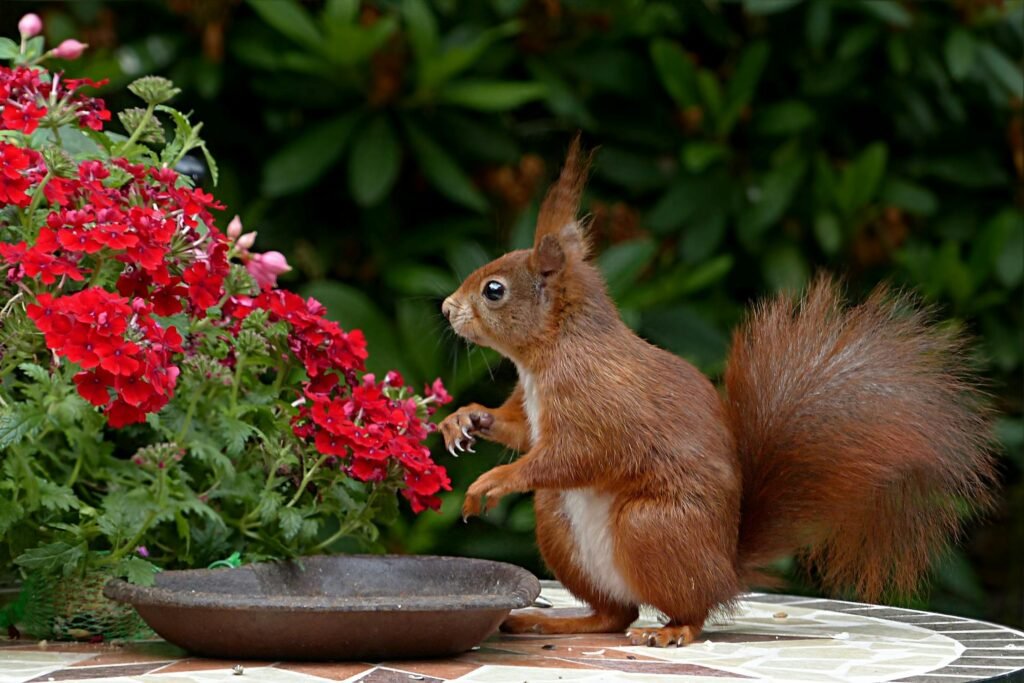Squirrels are everywhere and very interesting creatures. They live all over the world and grab our attention with their quick moves and acrobatics. Even though we see them often, we still don’t know a lot about them. These small, quick rodents are full of surprises.
In this article, we will explore ten amazing things about squirrels that make them special. Join us as we uncover some fascinating facts about this amazing creature.
1. Exceptional Agility and Acrobatics
(Nature’s Gymnasts)
One of the most noticeable features of squirrels is their amazing agility. Their light bodies, strong back legs, and sharp claws help them move through trees with ease. They can jump long distances between branches or trees, showing off their acrobatic skills. This agility helps them escape predators and find food quickly.
Squirrels can run up to 20 miles per hour, making them one of the fastest small animals. Their tails play a crucial role in balancing and steering, adding to their impressive acrobatics. This combination of speed, agility, and balance makes squirrels highly effective at navigating their environments and staying safe.
2. Highly Adaptable Diet
(Versatile Eaters)
Squirrels are famous for their diverse and flexible diet. Though they mainly eat nuts, seeds, and fruits, they are opportunistic eaters that can consume a wide variety of foods.
People have observed squirrels in cities consuming bird eggs, insects, and even leftover human food. This dietary flexibility helps squirrels thrive in different environments. Their sharp sense of smell helps them find food, even under snow or buried underground. Their diet also changes with the seasons, relying more on stored food in winter and fresh plants in spring and summer.
3. Sharp Memory and Hoarding Behavior
(Master Hoarders)
Squirrels are well-known for hoarding food. They collect and store nuts and seeds in various locations to have food when it’s scarce, especially in winter. Their sharp memory is what’s remarkable. According to research, squirrels can remember where they hide many of their food stores, demonstrating advanced spatial memory. To find their hoards, they use landmarks and cues in their surroundings.
However, they don’t retrieve all of their caches, unintentionally planting new trees and plants that contribute to forest growth. This showcases squirrels’ role in forest regeneration, even though it’s not their intention.
4. Communication Skills
(Chatterboxes of the Animal Kingdom)
Squirrels communicate through a sophisticated system of vocalizations and body language. They make different sounds, such as chattering, barking, and squeaking, to warn of danger, attract mates, or talk to their young. They also use tail movements and other gestures to send messages.

This complex communication helps them survive and do well in their habitats. For example, flicking their tails can show aggression or warn other squirrels, and specific sounds can indicate predators nearby. This shows how advanced their social behaviors are.
5. Diverse Species and Habitats
(Squirrel Diversity)
There are more than 200 species of squirrels, each suited to different habitats and climates. The main types include tree squirrels, ground squirrels, and flying squirrels, each with distinct adaptations. Tree squirrels are excellent climbers, ground squirrels are adept at digging burrows, and flying squirrels have a membrane called the patagium for gliding between trees.
This diversity allows squirrels to live in various environments, from dense forests to dry deserts. Some species live alone, while others are very social, demonstrating the wide range of lifestyles and adaptability within the squirrel family.
6. Role in Ecosystems
(Ecological Engineers)
Squirrels have a significant impact on their ecosystems. When they bury nuts and seeds, they unintentionally help forests grow and spread plant species. They conceal some seeds, which eventually sprout into new plants.
This seed spread is critical for keeping forests healthy and diverse. The food chain includes squirrels, which eat birds and mammals. Their digging helps aerate the soil, showing how they affect their habitats in many ways.
7. Unique Dental Structure
(Nature’s Nutcrackers)
Squirrels have unique teeth among rodents. Their incisors grow non-stop, so they must chew constantly to keep them from getting too long. This helps them crack open tough nuts and seeds.
Their strong jaws and sharp teeth are well-suited for their diet. Additionally, the alignment and sharpness of their teeth enable them to consume a variety of foods, ranging from hard nuts to soft plants. This demonstrates the special adaptation of their eating habits.
8. High Energy and Metabolism
(Energetic Dynamos)
Squirrels are recognized for their abundant energy and fast metabolism. They’re always busy—finding food, avoiding predators, or socializing—and this demands a lot of energy. Because of their quick metabolism, they need to eat a lot compared to their size.
Observing a squirrel, you can see how active and lively they are. This energetic lifestyle helps them stay alert to dangers and gather enough food to last through lean times.
9. Social Behavior and Territoriality
(Complex Social Lives)
Although squirrels are typically solitary, they display social behaviors, particularly during breeding and when caring for their young. They can be territorial, defending nests or food stores from other squirrels. Yet, some species show social tolerance, sharing nests or territories.
Playful activities, such as chasing each other, help them build physical skills and social ties. These interactions are vital for their survival and breeding success, revealing their intricate social structures.
10. Remarkable Adaptation to Urban Environments
(City Slickers)
Squirrels’ adaptation to urban environments is fascinating. Cities and towns provide abundant food and nesting spots in parks and gardens. Urban squirrels have mastered navigating human structures such as buildings and power lines. Their resilience and adaptability make them highly successful in city settings.
They often scavenge for food in trash cans, bird feeders, and even directly from people, demonstrating their resourcefulness. Despite challenges like traffic and limited green spaces, squirrels thrive, showcasing their remarkable ability to coexist with humans.
Conclusion
Squirrels are really amazing creatures, known for their agility, intelligence, and adaptability. They play crucial roles in ecosystems, exhibit complex behaviors, and thrive in diverse environments, even urban areas.
Exploring these ten unique characteristics of squirrels provides a deeper appreciation for these extraordinary animals. Whether you encounter them in a busy city park or a serene forest, take a moment to observe and appreciate the fascinating world of squirrels.



